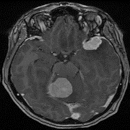Team Hugues DUFFAU – Jean-Philippe HUGNOT
Brain plasticity, stem cells and diffuse low-grade gliomas


Led by Professors H. Duffau and JP. Hugnot, our team explores different levels of brain plasticity, including cellular, structural and functional. Focusing on brain tumors and stem cells of the brain and spinal cord, our research aims to understand the molecular abnormalities and cellular origins of tumors, while developing innovative treatments and biomarkers. A complementary aspect of our work focuses on the plasticity of nervous system networks and nerve regeneration from stem cells, broadening our understanding of key mechanisms for significant therapeutic advances.
1 – Human brain connectome: mapping, plasticity and meta-networks (H DUFFAU,S MORITZ-GASSER, S NG)
We are exploring the human brain connectome, including the neural bases underlying movement, language, cognitive and emotional functions, non-verbal communication and their capacity for reorganization in gliomas. We are developing meta-network models of brain information processing, based on the dynamic interactions between neural networks. We use multimodal approaches, especially during awake surgery: behaviour, neurophysiology and neuroimaging, and their modulation before and after glioma removal. This allows us to establish an original link between neuro-oncology and cognitive neuroscience.
2 – Molecular/cellular heterogeneity and progression of low-grade diffuse gliomas (JP HUGNOT, C GOZE, V RIGAU)
Gliomas exhibit cellular heterogeneity, the origin of which we study along 3 axes: 1-the role of signaling pathways and GPCR receptors, 2-the role of tumor cell interaction with surrounding cells (neurons, oligodendrocytes, vessels, immune cells), 3-the formation of cancer stem cells and transformation foci. We use primary patient resection cultures as well as multi-omics (scRNA seq, …) and dynamic (video microscopy) approaches.
3 – Neural stem cells in the spinal cord (JP HUGNOT, L BAUCHET)
In a non-tumoral context, we study the processes that control the maintenance and differentiation of neural stem cells and oligodendrocyte progenitors (OPCs) in niches and parenchyma, in particular in the spinal cord. We use mouse models as well as human tissues.
4 – Effects of intercellular mitochondria transfers from the tumor microenvironment on glioblastoma progression (ML VIGNAIS, V RIGAU, C GOZE, A DARLIX, H DUFFAU, L BAUCHET)
We are studying the genetic basis and metabolic modifications (mitochondrial transfer through nanotubes) occurring during 1-the progression from low-grade gliomas to high-grade gliomas (glioblastomas) and 2-the acquisition of resistance to treatments. Thanks to a large cohort of patients, we study cases with a remarkable clinical course.
5 – Biomarkers for Diffuse Low-Grade Gliomas (A DARLIX, JP HUGNOT)
Our goal is to discover diagnostic, prognostic, and treatment response markers for diffuse low-grade gliomas. We focus on studying the epitranscriptome as well as genetic and epigenetic abnormalities to better understand these brain tumors. Our research aims to identify specific molecular signatures that will improve early diagnosis, refine predictions of disease progression, and personalize therapeutic strategies.
6 – Epidemiology of gliomas (L BAUCHET)
We have established and coordinated the French Brain Tumour Database (FBTDB), one of the largest of this type in Europe. This database provides a better understanding of the incidence rate, prevalence and survival of gliomas in France and allows identification of potential risk factors.
7 -Meningiomas (J BOETTO)
Meningiomas, the most common intracranial tumors, represent a challenge due to the morbidity associated with their symptoms and treatment. Our team is dedicated to the search for markers to define prognosis and develop targeted treatments, with projects focusing on prognostic markers detectable in serum.

Studying brain plasticity: from connectome to stem cells
Left: white matter bundles on MRI – Right: neurosphere from a glioma stem cell (green arrow)

 IGF Nord 110
IGF Nord 110 04 34 35 92 18
04 34 35 92 18
 IGF Nord 110
IGF Nord 110 04 34 35 92 72
04 34 35 92 72
 IGF Nord 110
IGF Nord 110 04 34 35 92 18
04 34 35 92 18
 IGF Sud 001
IGF Sud 001 04 34 35 92 00
04 34 35 92 00
 IGF Nord 110
IGF Nord 110 04 34 35 92 18
04 34 35 92 18
 IGF Nord 110
IGF Nord 110 04 34 35 92 72
04 34 35 92 72
 IGF Nord 110
IGF Nord 110 04 34 35 92 18
04 34 35 92 18
 IGF Nord 110
IGF Nord 110 04 34 35 92 72
04 34 35 92 72
 IGF Nord 110
IGF Nord 110 04 34 35 92 72
04 34 35 92 72
 IGF Nord 110
IGF Nord 110 04 34 35 92 18
04 34 35 92 18
 IGF Nord 109
IGF Nord 109 04 34 35 92 18
04 34 35 92 18
 IGF Nord 110
IGF Nord 110 04 34 35 92 00
04 34 35 92 00
 IGF Nord 109
IGF Nord 109 04 34 35 92 18
04 34 35 92 18
 IGF Nord 110
IGF Nord 110 04 34 35 92 00
04 34 35 92 00
 IGF Nord 109
IGF Nord 109 04 34 35 92 18
04 34 35 92 18
 IGF Nord 109
IGF Nord 109 04 34 35 92 18
04 34 35 92 18
 IGF Nord 110
IGF Nord 110 04 34 35 92 72
04 34 35 92 72
 IGF Nord 109
IGF Nord 109 04 34 35 92 00
04 34 35 92 00- Boetto, J.; Plu, I.; Ducos, Y.; Blouin, A.; Teranishi, Y.; Brainbank Neuro-CEB Neuropathology Network; Bizzotto, S.; Kalamarides, M.; Peyre, M. Normal Meninges Harbor Oncogenic Somatic Mutations in Meningioma-Driver Genes. Acta Neuropathol 2023, 146 (6), 833–835.
- Ng, S.; Valdes, P. A.; Moritz-Gasser, S.; Lemaitre, A.-L.; Duffau, H.; Herbet, G. Intraoperative Functional Remapping Unveils Evolving Patterns of Cortical Plasticity. Brain 2023, 146 (7), 3088–3100.
- Ripoll, C.; Poulen, G.; Chevreau, R.; Lonjon, N.; Vachiery-Lahaye, F.; Bauchet, L.; Hugnot, J.-P. Persistence of FoxJ1+ Pax6+ Sox2+ Ependymal Cells throughout Life in the Human Spinal Cord. Cell Mol Life Sci 2023, 80 (7), 181.
- Nakhle, J.; Khattar, K.; Özkan, T.; Boughlita, A.; Abba Moussa, D.; Darlix, A.; Lorcy, F.; Rigau, V.; Bauchet, L.; Gerbal-Chaloin, S.; Daujat-Chavanieu, M.; Bellvert, F.; Turchi, L.; Virolle, T.; Hugnot, J.-P.; Buisine, N.; Galloni, M.; Dardalhon, V.; Rodriguez, A.-M.; Vignais, M.-L. Mitochondria Transfer from Mesenchymal Stem Cells Confers Chemoresistance to Glioblastoma Stem Cells through Metabolic Rewiring. Cancer Res Commun 2023, 3 (6), 1041–1056.
- Herbet, G.; Duffau, H. Contribution of the Medial Eye Field Network to the Voluntary Deployment of Visuospatial Attention. Nat Commun 2022, 13 (1), 328.
- Chevreau, R.; Ghazale, H.; Ripoll, C.; Chalfouh, C.; Delarue, Q.; Hemonnot-Girard, A. L.; Mamaeva, D.; Hirbec, H.; Rothhut, B.; Wahane, S.; Perrin, F. E.; Noristani, H. N.; Guerout, N.; Hugnot, J. P. RNA Profiling of Mouse Ependymal Cells after Spinal Cord Injury Identifies the Oncostatin Pathway as a Potential Key Regulator of Spinal Cord Stem Cell Fate. Cells 2021, 10 (12), 3332.
- Guelfi, S.; Orsetti, B.; Deleuze, V.; Rigau, V.; Bauchet, L.; Duffau, H.; Rothhut, B.; Hugnot, J.-P. SLUG and Truncated TAL1 Reduce Glioblastoma Stem Cell Growth Downstream of Notch1 and Define Distinct Vascular Subpopulations in Glioblastoma Multiforme. Cancers (Basel) 2021, 13 (21), 5393.
- Darlix, A.; Hirtz, C.; Mollevi, C.; Ginestet, N.; Tiers, L.; Jacot, W.; Lehmann, S. Serum Glial Fibrillary Acidic Protein Is a Predictor of Brain Metastases in Patients with Metastatic Breast Cancer. Int J Cancer 2021, 149 (8), 1605–1618.
- Boetto, J.; Lerond, J.; Peyre, M.; Tran, S.; Marijon, P.; Kalamarides, M.; Bielle, F. GAB1 Overexpression Identifies Hedgehog-Activated Anterior Skull Base Meningiomas. Neuropathol Appl Neurobiol 2021, 47 (6), 748–755.
- Augustus, M.; Pineau, D.; Aimond, F.; Azar, S.; Lecca, D.; Scamps, F.; Muxel, S.; Darlix, A.; Ritchie, W.; Gozé, C.; Rigau, V.; Duffau, H.; Hugnot, J.-P. Identification of CRYAB+ KCNN3+ SOX9+ Astrocyte-Like and EGFR+ PDGFRA+ OLIG1+ Oligodendrocyte-Like Tumoral Cells in Diffuse IDH1-Mutant Gliomas and Implication of NOTCH1 Signalling in Their Genesis. Cancers (Basel) 2021, 13 (9), 2107.
- Leventoux, N.; Augustus, M.; Azar, S.; Riquier, S.; Villemin, J. P.; Guelfi, S.; Falha, L.; Bauchet, L.; Gozé, C.; Ritchie, W.; Commes, T.; Duffau, H.; Rigau, V.; Hugnot, J. P. Transformation Foci in IDH1-Mutated Gliomas Show STAT3 Phosphorylation and Downregulate the Metabolic Enzyme ETNPPL, a Negative Regulator of Glioma Growth. Sci Rep 2020, 10 (1), 5504.
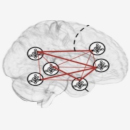
Connectome of the human brain: mapping, plasticity and meta-networks
Principal investigator
Hugues DUFFAU
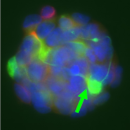
Control of differentiation and proliferation of neural stem cells and tumor cells (gliomas)
Principal investigator
Jean-Philippe HUGNOT
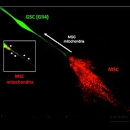
Effects of intercellular mitochondria transfers from the tumor microenvironment on glioblastoma progression
Principal investigator
Marie-Luce VIGNAIS
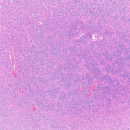
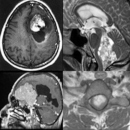
Epidemiology of gliomas and physiological study of the spinal cord
Principal investigator
Luc BAUCHET
